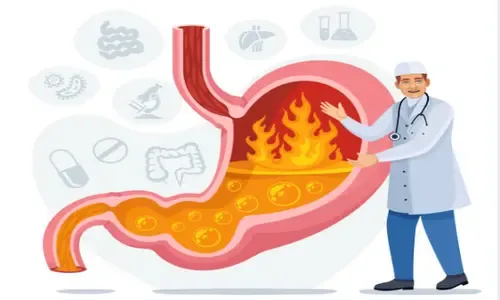Introduction
Low stomach acid, also known as hypochlorhydria, is a common condition that can lead to various digestive issues. It occurs when the production of hydrochloric acid in the stomach is insufficient. In this article, we will explore the causes, symptoms, and tests for low stomach acid. Understanding these aspects can help you identify and address this condition effectively.
What Causes Low Stomach Acid?
There are several factors that can contribute to low stomach acid levels. One primary cause is atrophic gastritis, a condition where the lining of the stomach shrinks, leading to a decrease in acid production. Atrophic gastritis is prevalent in individuals over the age of 55, affecting approximately 50% of this population. Additionally, autoimmune diseases can also lead to atrophic gastritis, further exacerbating low stomach acid levels.
Another common cause of low stomach acid is the presence of the H. pylori bacteria. This microbe can lead to chronic inflammation in the stomach, which in turn reduces hydrochloric acid production. Moreover, poor dietary choices, such as consuming junk food, and the use of antacids and antibiotics can also contribute to low stomach acid levels.
Symptoms of Low Stomach Acid
Identifying the symptoms of low stomach acid is crucial for prompt diagnosis and treatment. Common symptoms include indigestion, gas, bloating, acid reflux, and gastroesophageal reflux disease (GERD). These symptoms occur when the inadequate acid fails to break down food effectively, leading to digestive discomfort. Additionally, individuals with low stomach acid may experience fatigue, anemia, neurological problems, lowered cognitive function, and brittle nails.
Testing for Low Stomach Acid
If you suspect you have low stomach acid, several tests can help confirm the diagnosis. These tests are simple and can be performed at home. One method is the Ridler gastric acid reflux point test. By applying pressure to a specific point on the rib cage, you can determine if it is tender or overly sensitive, indicating a deficiency in hydrochloric acid.
Another test involves the use of baking soda. Dissolving a fourth of a teaspoon of baking soda in a glass of water and drinking it on an empty stomach can reveal whether you have enough stomach acid. If you begin burping within one to five minutes, it suggests adequate acid levels, as baking soda neutralizes acids.
Alternatively, you can take betaine hydrochloride, a remedy for low stomach acid, before meals. By gradually increasing the dosage with each meal, you can assess if burping occurs within one to five minutes. Burping after consuming betaine hydrochloride indicates sufficient stomach acid, while the absence of burping suggests low acid levels.
Addressing Low Stomach Acid
If the tests confirm low stomach acid, there are several approaches to address the condition. However, it is essential to address any underlying inflammation or ulceration in the stomach before attempting to acidify it. This can be achieved by consuming healing foods such as cabbage juice or wheatgrass juice powder, which help soothe and repair the stomach lining. Zinc supplements can also aid in the healing process.
To support stomach acid production, betaine hydrochloride can be taken as a supplement. It is crucial to gradually increase the dosage to avoid irritating the already inflamed stomach lining. Additionally, a high-quality probiotic can help restore the balance of gut bacteria and promote overall digestive health.
The Role of Intrinsic Factor and Nutrient Absorption
Low stomach acid not only affects the breakdown of food but also hinders the absorption of essential nutrients. The same cells that produce hydrochloric acid also produce intrinsic factor, a protein that facilitates the absorption of vitamin B12. Without sufficient intrinsic factor, individuals may experience a deficiency in B12, leading to fatigue, anemia, and neurological problems.
Furthermore, low stomach acid impairs the absorption of folate and iron. Folate deficiency can result in various health issues, while inadequate iron absorption leads to anemia and reduced energy levels. To address these deficiencies, it is essential to supplement with the right form of B12 and folate, such as methylcobalamin and methylfolate.
Additional Information
It is worth noting that low stomach acid can also result in other symptoms and complications. These include a loss of taste for red meat, muscle cramps or twitching, thinning hair, acid reflux, alkaline reflux, and chronic halitosis. These symptoms arise due to the incomplete digestion of food, fermentation in the digestive tract, and irritation of the esophagus.
Conclusion
Low stomach acid is a common condition that can cause various digestive issues and nutrient deficiencies. By understanding the causes, symptoms, and tests for low stomach acid, you can take the necessary steps to address this condition. Consult with a healthcare professional for an accurate diagnosis and personalized treatment plan. With proper management, you can restore optimal stomach acid levels and improve your overall digestive health.
Disclaimer: This article is not a substitute for professional medical advice. Always consult with a healthcare provider for proper diagnosis and treatment of any health condition.

